Photos emerge of an uncontacted Amazon tribal community in Brazil threatened by illegal gold miners
The Yanomami tribe are one of the largest isolated groups in the Americas, but their existence is threatened by criminal outsiders
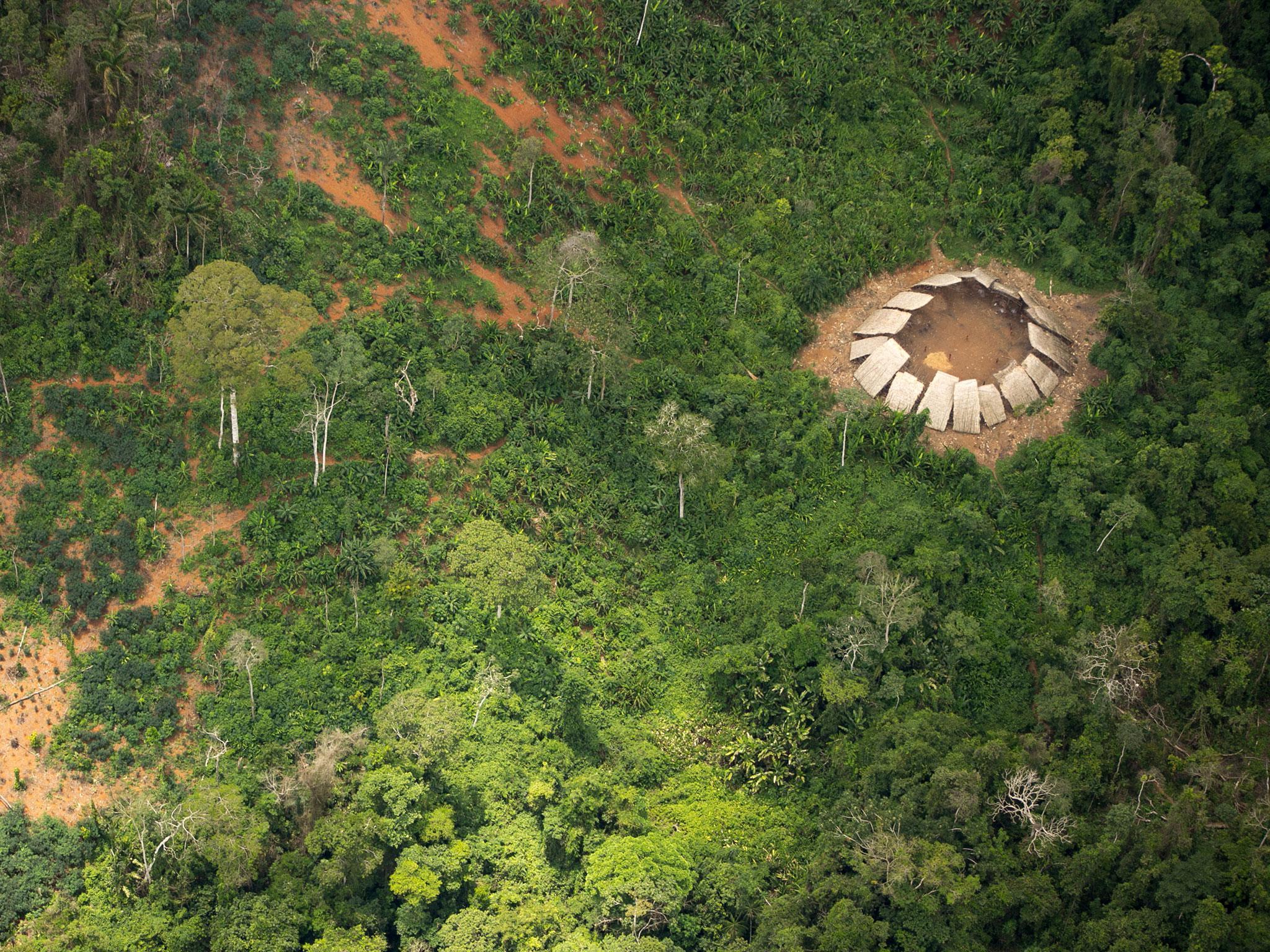
Extraordinary new photos have emerged of an uncontacted tribal community in the Amazon Jungle.
The pictures, taken from the air, show people in a communal “yano” structure in Yanomami indigenous territory in northern Brazil, close to the border with Venezuela.
Each section of thatch is believed to house a different family, and is where they sleep, keep fires and store food.
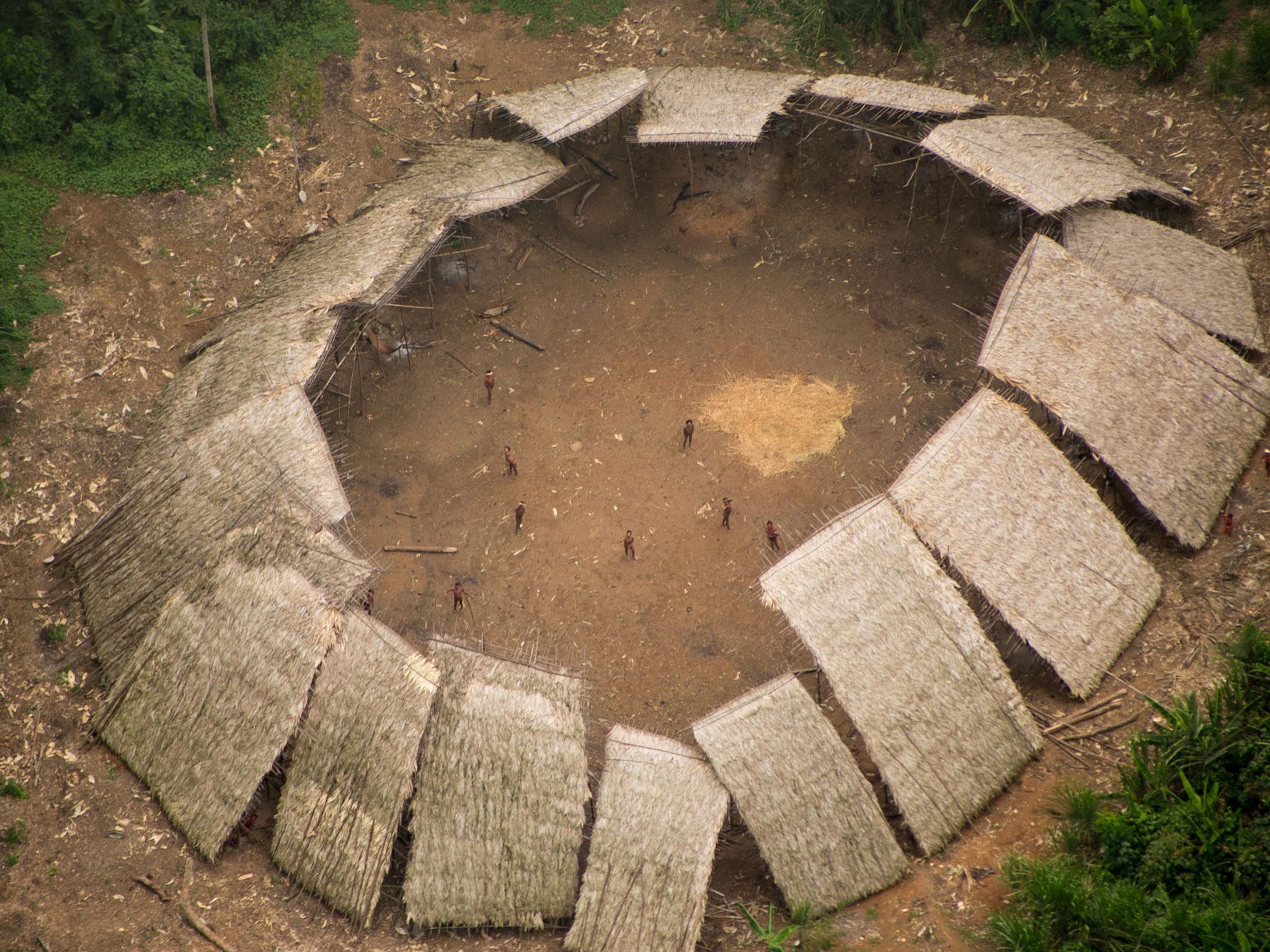
The isolated Yanomami communities, some of whom have had contact with the outside world, collectively number around 35,000 people, and the people live by foraging and hunting from the surrounding forest.
They are understood to make use of 500 different plants for various purposes and their knowledge, developed over thousands of years, is described as “irreplaceable” by Survival International, an NGO which campaigns for the rights of indigenous peoples.
But the estimated 100-strong community seen in the latest photographs is at risk of being destroyed by illegal gold miners who are closing in on their land.
Officially, the Yanomami indigenous territory – which covers over 9.6 million hectares – is protected by the government.
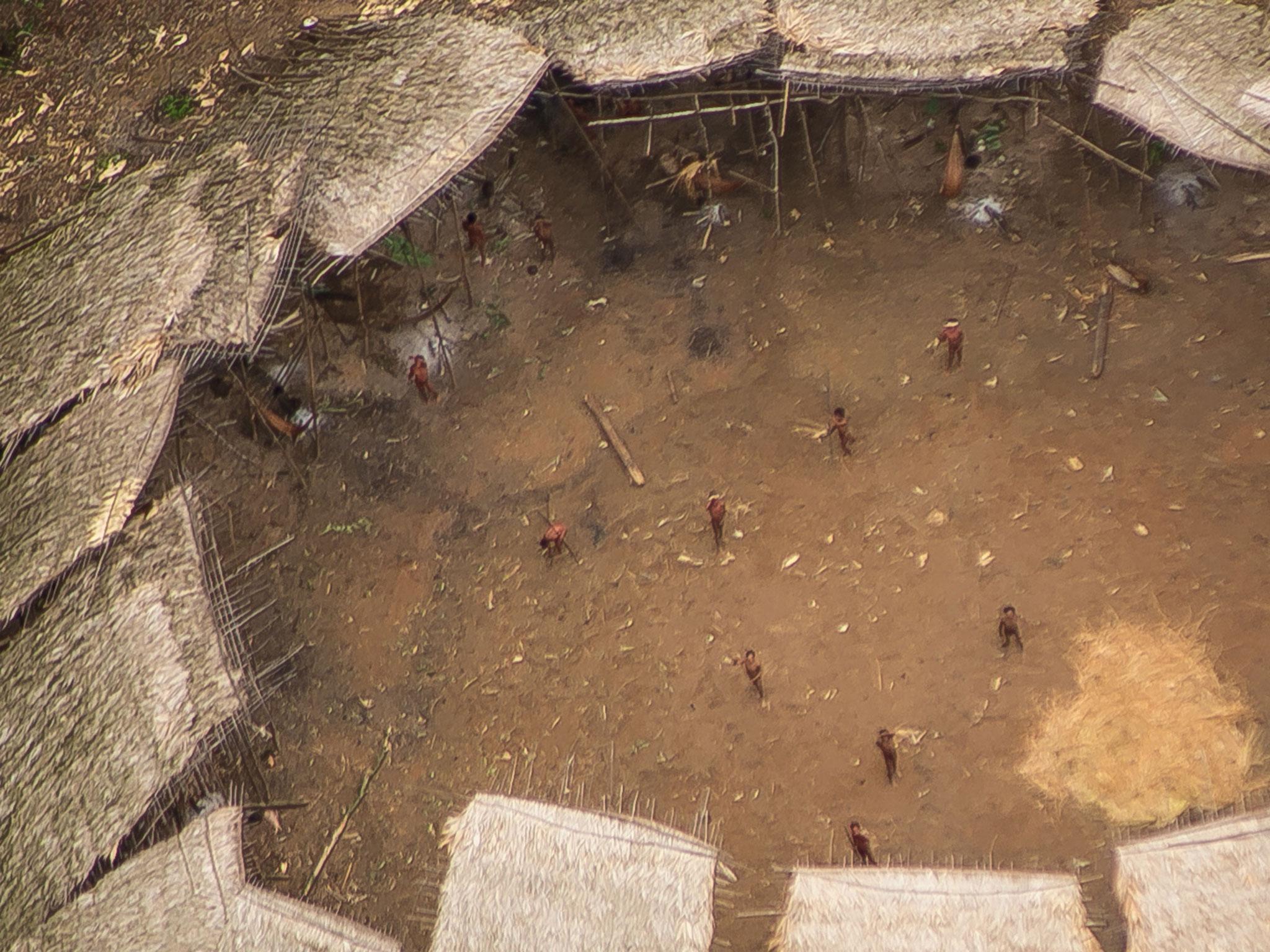
Outsiders, particularly criminal groups, bring the threat of violence, environmental destruction and diseases like malaria, to which uncontacted peoples have no immune resistance.
According to veteran Yanomami activist and shaman, Davi Kopenawa, the miners “are like termites – they keep coming back and they don’t leave us in peace”.
“The place where the uncontacted Indians live, fish, hunt and plant must be protected. The whole world must know that they are there in their forest and that the authorities must respect their right to live there,” he said.
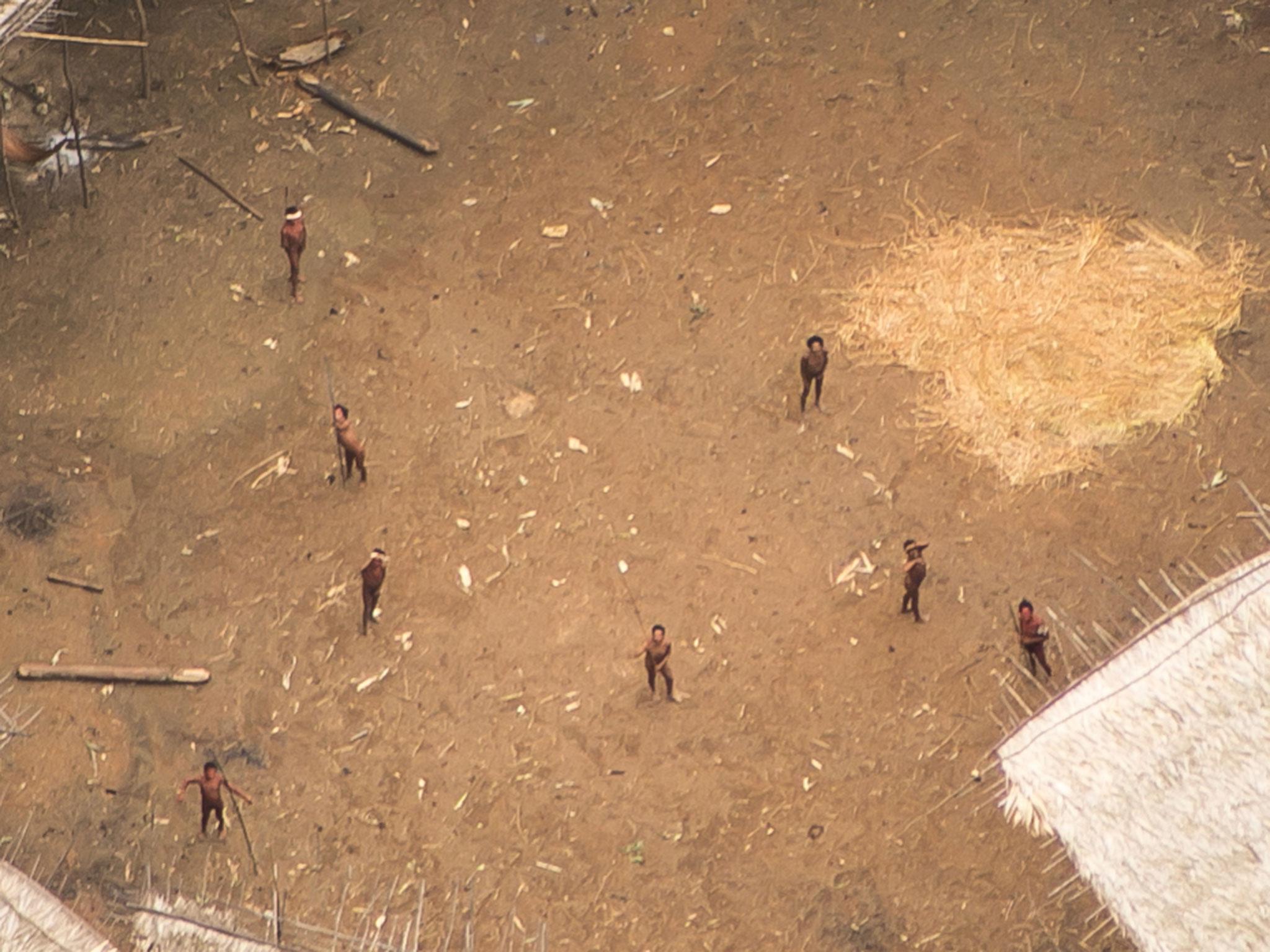
In Yanomami culture, shamans lead spiritual ceremonies, during which they inhale yakoana, a hallucinogenic snuff.
Survival International opposes the prospect of any contact with the community. They say the indigenous people have fired arrows at passing aircraft, fled from outsiders and avoided members of their own tribe who have contacted the outside world.
The organisation holds that it must be the indigenous people themselves that initiate contact. The pictured group appears to have made no attempts to do so.
However, an estimated 1,000 gold miners are now only around 35km from the community. The photos themselves were taken from a government flight investigating how many illegal miners there were in the area. The precise location is being kept a secret to protect the community.
Previous contact between outsiders and Yanomami has resulted in bloodshed. In 1993, a year after the Yanomami territory was officially recognised, 16 indigenous people, including a baby, were murdered in the village of Haximú by miners.
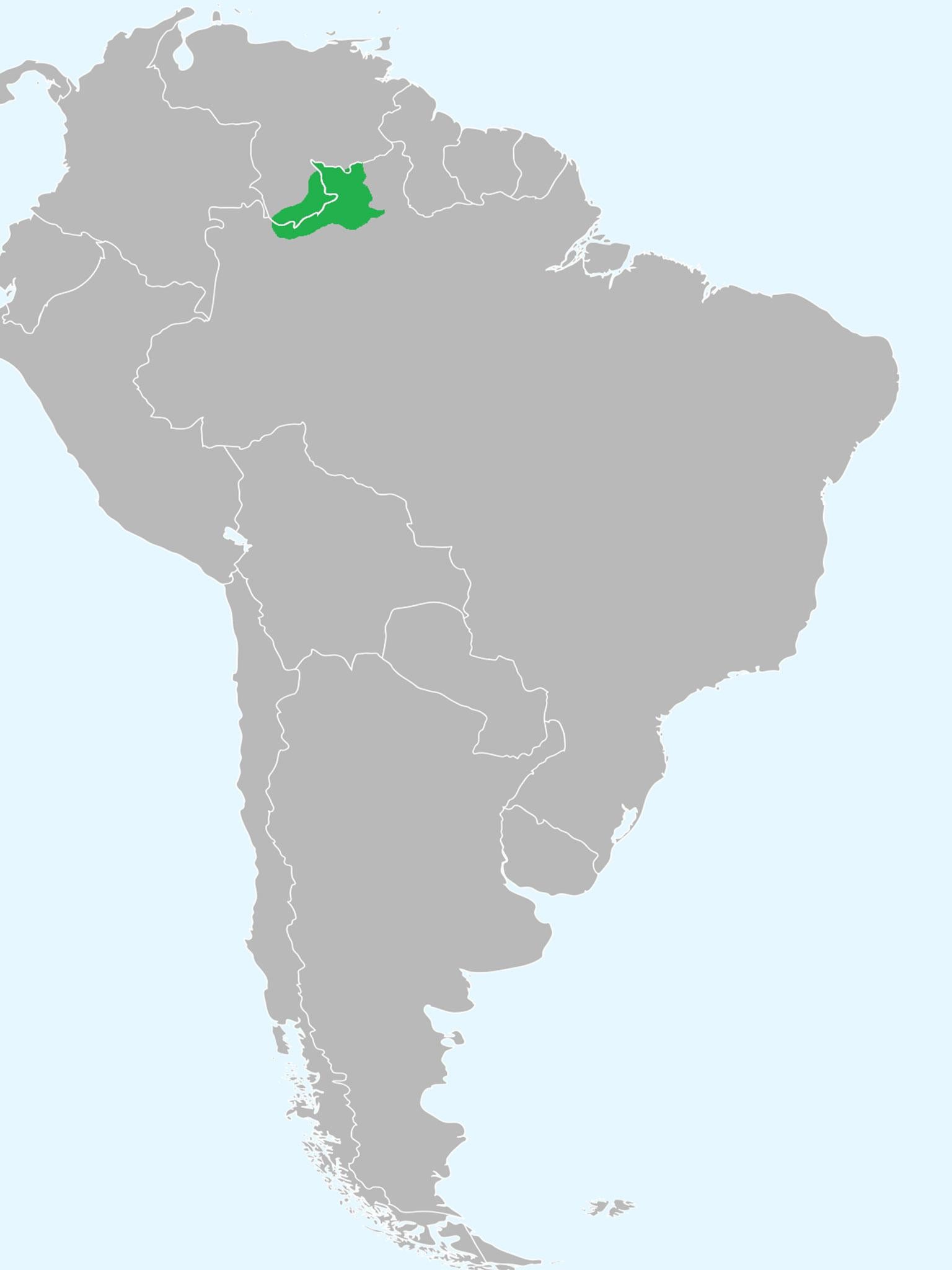
There have been numerous other incidents of indigious people being attacked by miners. Their operations have also caused a high rate of mercury poisoning among Yanomami and Yekuana tribes in the Amazon.
Campaigners for the rights of the Yanomami have called for better policing of their territory.
However, Brazilian government budget cuts and infighting have weakened the protection given to the Yanomami and other uncontacted tribes by specialised teams.
Before 1992, when this protection was enacted, huge numbers of indigenous people were wiped out after contacting outsiders.
Survival’s Director Stephen Corry said: “These extraordinary images are further proof of the existence of still more uncontacted tribes. They’re not savages but complex and contemporary societies whose rights must be respected.
“It’s obvious that they’re perfectly capable of living successfully without the need for outside notions of ‘progress’ and ‘development’.
“All uncontacted tribal peoples face catastrophe unless their land is protected. We’re doing everything we can to secure their land for them, and to give them the chance to determine their own futures.”
Join our commenting forum
Join thought-provoking conversations, follow other Independent readers and see their replies
Comments